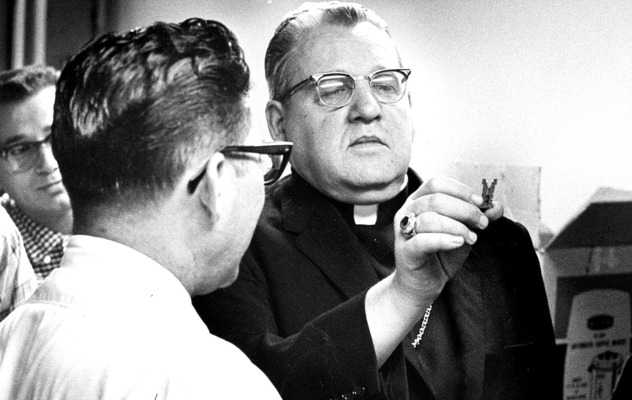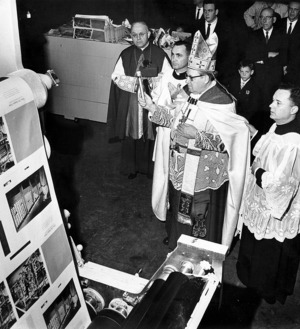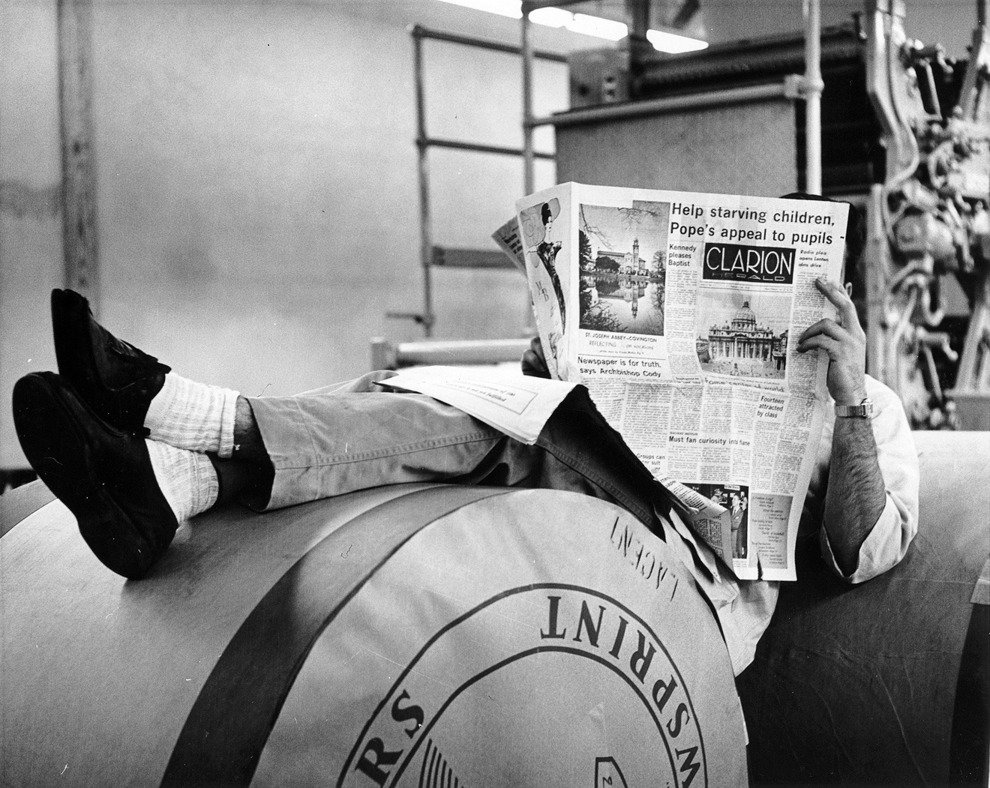
A platform that encourages healthy conversation, spiritual support, growth and fellowship

NOLACatholic Parenting Podcast
A natural progression of our weekly column in the Clarion Herald and blog

The best in Catholic news and inspiration - wherever you are!
Clip file 'morgue' was Google before Google
-

New Orleans Co-Adjutor Archbishop John Cody in 1963.
You’ve heard the radio ads: Rummage through your attic for those plastic Wal-Mart bags full of grainy family photos and VHS home movies and ship them off to legacybox.com, where in seconds – at the cost either of a second mortgage or a firstborn child – your life’s story will be transferred magically to a single, wafer-thin disc somehow capable of storing more gigabytes than it took to send Neil Armstrong to the moon.Long before “control-alternate-delete” or Apple’s rainbow-colored “wheel of death,” the Egyptians had it right. Hieroglyphics – those tiny stick drawings and phonetic icons etched into temple walls – preserved family history for millennia without fear of being erased or recorded over (see, tragically: Ray Romano of “Everybody Loves Raymond” taping over his wedding VHS with the Super Bowl while his wife Deborah shoots daggers at him with her cold, dark eyes).
Preserving oral, written and photographic family history is that important: the first birthday cake; the shaky, out-of-focus smile; the Easter dress or sailor suit; the mountain range of Christmas wrapping under the tree; the first haircut.
 In much the same way, the Clarion Herald has been gathering family photos and editorial keepsakes for the Archdiocese of New Orleans for more than 60 years. Our inaugural issue – Feb. 28, 1963 – was printed as a 15-by-21-inch “broadsheet” on an offset printing press so advanced for its time that the superior photographic reproduction (think thousands of tiny pixels) buried the competition’s photos, which, by comparison, looked like cave drawings.
In much the same way, the Clarion Herald has been gathering family photos and editorial keepsakes for the Archdiocese of New Orleans for more than 60 years. Our inaugural issue – Feb. 28, 1963 – was printed as a 15-by-21-inch “broadsheet” on an offset printing press so advanced for its time that the superior photographic reproduction (think thousands of tiny pixels) buried the competition’s photos, which, by comparison, looked like cave drawings.In the days of Lawrence Welk and Roy Rogers, the Clarion Herald had three inventive ways of preserving and retrieving its history.
First, every issue from 1963 through 2002 was microfilmed, and the film was distributed for safekeeping to the archdiocesan archives, to Notre Dame Seminary’s library and to a bunker just outside of Jackson, Mississippi (umm, just in case).
Second, several copies of each issue were saved, and those issues were collated at the end of the year by Walter E. Eckert Bookbinding on Lafayette Street to produce hardbound volumes for each year. Those hardbound volumes reside today at the Clarion Herald offices, at the archdiocesan archives and at the seminary library.
 Third, a secretary in charge of the Clarion Herald’s clip file “morgue” would dutifully cut out every story that appeared in each issue, stamp the story with the issue date and then neatly fold and insert it into a small, yellow manila envelope. Those envelopes were categorized alphabetically by topic: For example, the St. Louis Cathedral envelope would contain every story mentioning the cathedral. To aid in future searches – think of the clip file “morgue” as Google before Google – the date and headline of each story placed into the envelope was typed on the outside of the envelope so you didn’t have to guess at what was inside.
Third, a secretary in charge of the Clarion Herald’s clip file “morgue” would dutifully cut out every story that appeared in each issue, stamp the story with the issue date and then neatly fold and insert it into a small, yellow manila envelope. Those envelopes were categorized alphabetically by topic: For example, the St. Louis Cathedral envelope would contain every story mentioning the cathedral. To aid in future searches – think of the clip file “morgue” as Google before Google – the date and headline of each story placed into the envelope was typed on the outside of the envelope so you didn’t have to guess at what was inside.Over time, the morgue expanded to six file cabinets, each containing four drawers, and its existence was vital in pulling up thousands of stories – long forgotten even within the collective memory.
With the advent of desktop publishing in 2002 or so, the Clarion Herald produced each issue by creating PDFs of each page and then sending those files electronically to the printer. Our microfilming stopped around 2004. Whenever someone called searching for a back story or some slice of history, the morgue was great, but it had a finite lifespan.
 Here’s where things get really exciting. Very soon, with the expertise of the Catholic Research Resources Alliance, every issue of all 60-plus years of the Clarion Herald will be available, free of charge, to anyone with a computer. And, through the miracle of optical character recognition, each issue will be 100% searchable through any combination of search words.
Here’s where things get really exciting. Very soon, with the expertise of the Catholic Research Resources Alliance, every issue of all 60-plus years of the Clarion Herald will be available, free of charge, to anyone with a computer. And, through the miracle of optical character recognition, each issue will be 100% searchable through any combination of search words.Forget the scissors and the manila folders. Just type in a search term and click a button.
The research benefits, especially for Catholic school students, become immediately apparent:
►How did the Archdiocese of New Orleans desegregate its Catholic schools in the 1960s?
►Who were the members of your Catholic high school graduating class in 1965?
►What was the immediate church reaction when the Supreme Court issued its Roe v. Wade decision on Jan. 22, 1973?
►How did Archbishop Philip Hannan prepare for the historic visit of Pope John Paul II in 1987?
►What did my pastor or my principal look like when he had a full head of hair?
It will all be there – and more. Nearly two dozen Catholic newspapers will have a digitized presence, giving researchers an unparalleled look at history through the eyes of the Catholic press.
The project has been massive, but also tons of fun. Along the way, we discovered that no matter how diligent we had been in archiving our PDFs for every issue since 2002, some issues went missing or were tossed into the River Styx by the “wheel of death.” Strange fact: The PDFs of the Aug. 24, 2005 issue – the one right before Katrina – disappeared.
Our senior graphic artist, Cheryl Dejoie-Methe, had to rescan seven issues that were missing, but the good news is we had the hard copies to recapture them. Missing only 150 pages out of approximately 63,500 is a pretty good batting average, even in hieroglyphics.
We’ll let you know when everything goes live. In the meantime, ladies and gentlemen, get ready to start your search engines.




